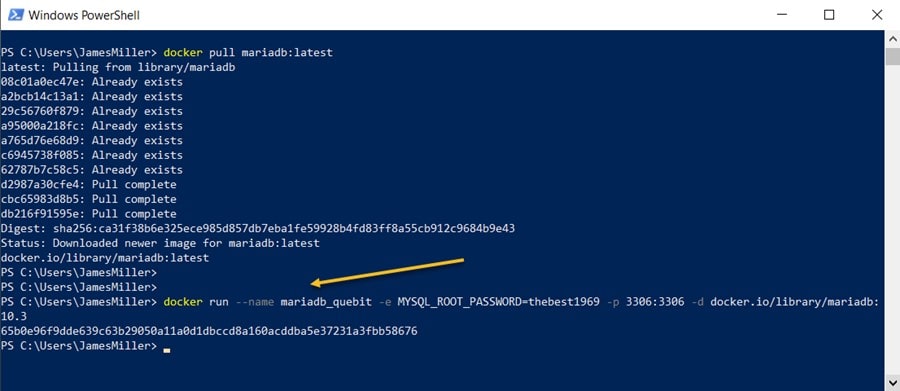

The dind image is baked with required utilities for Docker to run inside a docker container.


Otherwise, I would suggest you use the first approach.įor this, you just need to use the official docker image with dind tag. Use this method only if you really want to have the containers and images inside the container. This method actually creates a child container inside a container. īecome A DevOps Engineer in 2022: A Comprehensive Guide FROM ubuntu:18.04īuild the Dockerfile docker build -t test-image. mkdir test & cd testĬopy the following Dockerfile contents to test the image build from within the container. Step 4: Now create a Dockerfile inside test directory. Step 3: When you list the docker images, you should see the ubuntu image along with other docker images in your host VM. Step 2: Once you are inside the container, execute the following docker command. docker run -v /var/run/docker.sock:/var/run/docker.sock -ti docker Step 1: Start Docker container in interactive mode mounting the docker.sock as volume. It has docker the docker binary in it.įollow the steps given below to test the setup. To test his setup, use the official docker image from the docker hub. Meaning, even though you are executing the docker commands from within the container, you are instructing the docker client to connect to the VM host docker-engine through docker.sock Here, the actual docker operations happen on the VM host running your base docker container rather than from within the container. Now, from within the container, you should be able to execute docker commands for building and pushing images to the registry. So when used in real projects, understand the security risks, and use it. Just a word of caution: If your container gets access to docker.sock, it means it has more privileges over your docker daemon. To run docker inside docker, all you have to do it just run docker with the default Unix socket docker.sock as a volume.įor example, docker run -v /var/run/docker.sock:/var/run/docker.sock \
DOCKER RUN IMAGE AND GIVE CONTAINER NAME HOW TO
curl -unix-socket /var/run/docker.sock Now that you have a bit of understanding of what is docker.sock, let’s see how to run docker in docker using docker.sock If you are on the same host where Docker daemon is running, you can use the / var/run/docker.sock to manage containers.įor example, if you run the following command, it would return the version of docker engine. Docker daemon by default listens to docker.sock. Sockets are meant for communication between processes on the same host. var/run/docker.sock is the default Unix socket. Method 1: Docker in Docker Using What is /var/run/docker.sock? Make sure you have docker installed in your host to try this setup. Let’s have a look at each option in detail. Run docker by mounting docker.sock (DooD Method).There are three ways to achieve docker in docker

Use docker inspect + container id and grep user or name then you can get the Container User Name and login into the container. If you run docker images, you should see an image whose repository is username/image_name and tag is tag_name. Next, we tell the Docker daemon to build the image and give it the specified tag. We tell the Docker daemon to fetch the Docker file present in the current directory (that's what the. In respect to this, does Docker tag create a new image? The default filename is Dockerfile (without an extension), and using the default can make various tasks easier while working with containers. Subsequently, question is, can we rename Dockerfile? You may name your Dockerfiles however you like. You will need to create a new repository with the name of your choice, move all relevant tags to the new repository created, and delete the existing repository you wish to rename. Currently, you cannot rename a Docker Hub repository once it's been created via the Docker Hub directly. Also, how do I rename a docker repository?Īnswer.


 0 kommentar(er)
0 kommentar(er)
